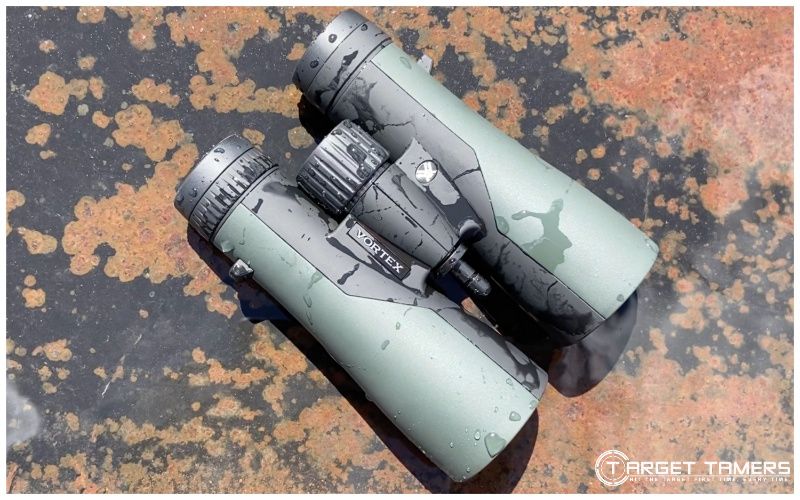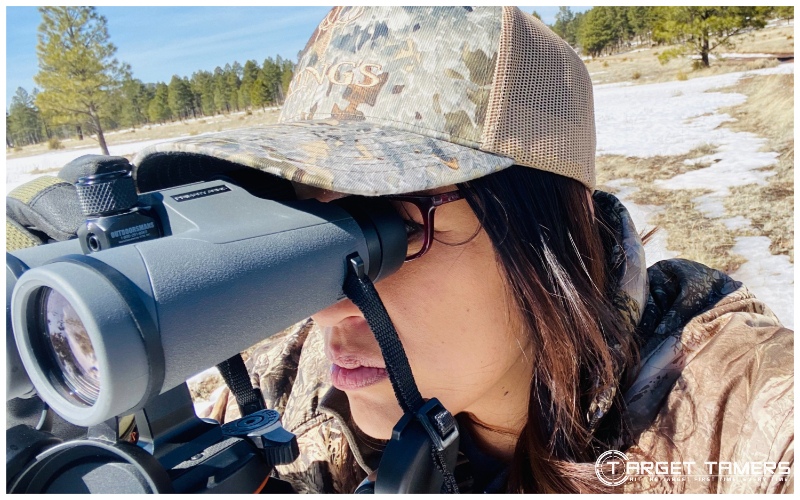This article contains affiliate links. We may earn a small commission if you purchase via these links.
I'm always on the hunt for affordable binoculars that stand out in quality and performance.
I'm proud to showcase the best binoculars under $200 that have brand-name recognition, excellent optics, and tough builds.
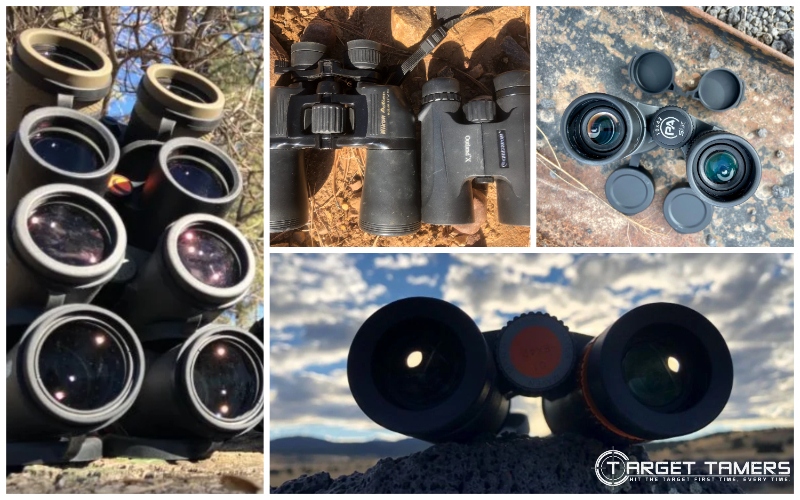
I also compare optical coatings, magnification, eye relief, durability, and warranties to give you specs that will prove useful in picking the right one for you.
Comparison Table: Best Binoculars Under $200
| IMAGE | PRODUCT | DETAILS | |
|---|---|---|---|
 | Vortex Crossfire HD 12X50 |
| CHECK PRICE |
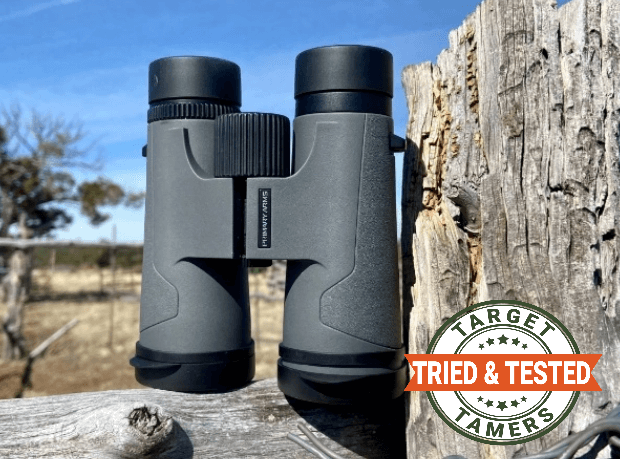 | Primary Arms SLx 10x42 |
| CHECK PRICE |
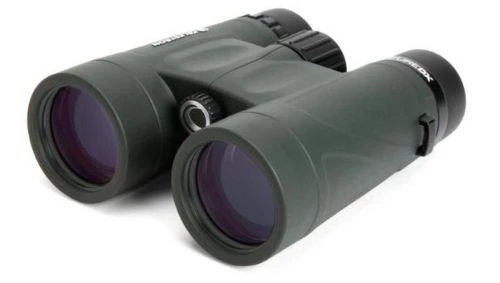 | Celestron Nature DX 8x42 |
| CHECK PRICE |
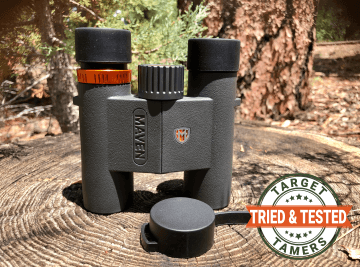 | Maven C.2 7x28 |
| CHECK PRICE |
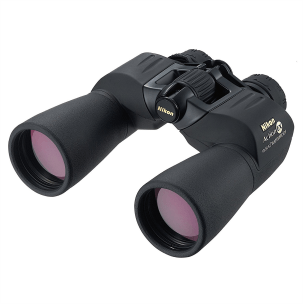 | Nikon Action Extreme 10X50 ATB |
| CHECK PRICE |
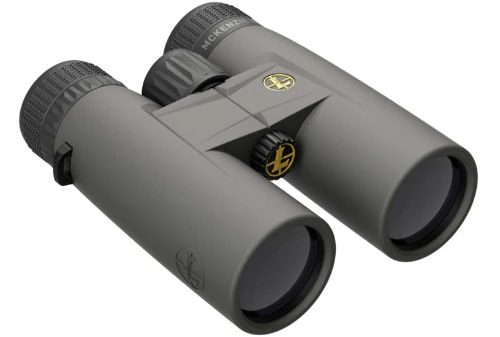 | Leupold BX-1 McKenzie HD 10x42 |
| CHECK PRICE |
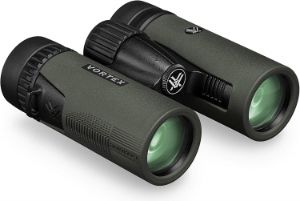 | Vortex Diamondback HD 8X32 |
| CHECK PRICE |
Why Trust Us?
After hundreds of hours of hand-testing binoculars in the field and at the range, and thousands more hours researching and writing about them, we feel we earn the title of experts when it comes to optics!
We purchase as many of the optics for our tests as possible, and run them through their paces to make sure they will perform at the range and in the field.
Our combined decades of experience from hunting and camping, to big game hunting and competitions has been integral in putting together this round-up of the best binoculars under $200.
Get the inside scoop on how we test optics here.
Two hundred dollars is a lot of money, and it's even more so if it's your first-time buy. In this price range, you'll want to look for dependable binoculars that can get the job done, plus some.
Beginners and even intermediate hunters and Glasser’s will trap a great buy in this budget range. You don't have to spend more than this to ensnare something worth keeping for longer than you may anticipate.
Expect to get "extra mile" quality when it comes to brands like Leupold, Nikon, and Bushnell. If this sounds good to you, let's dig right in!
The 7 Best Binoculars Under $200
1. Vortex Crossfire HD 12X50 Binoculars - Best Overall
If you didn't already know, the Crossfire line of binos were recently improved and released as the Crossfire HD series. What's the difference? We lay it out for you here.
Pros:
- Price
- HD optics
- High power
- 50 mm apertures
- Fog/waterproof
Cons:
- Same look to old model
If you thought you could pick out the new model against the old one, you might have a difficult time doing so. They look the same because essentially it is the same binocular. Few changes have been made, but it's the changes on the inside that counts.
The obvious and key upgrade is the optics from standard glass to Vortex's HD Optical System. It's said to provide high-def image quality, reduced chromatic aberration, and improved resolution and color fidelity. From field-testing the 10x50 model, overall optical quality is passable.

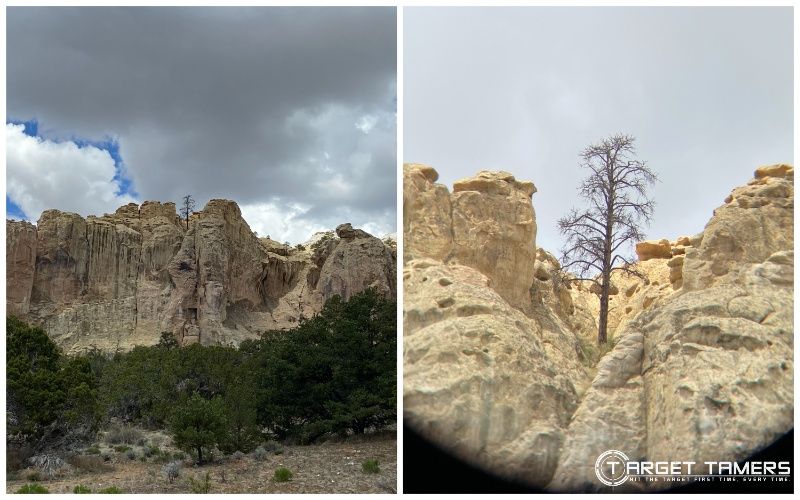
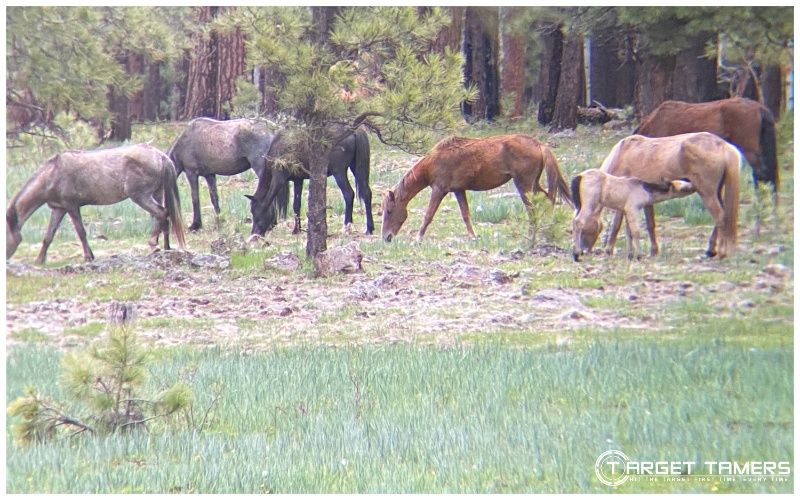
In my opinion, HD is a marketing term used for the Crossfires as I see no evidence of at least even one ED element. There's not a lot of CA and resolution isn't the greatest, but it works for hunting and recreational use.
The HD model sports a slightly slimmer body with a 6.6 x 5.3 in size and 29.5 oz weight. With large 50 mm apertures and 12x magnification zoom, it's not bad at all.
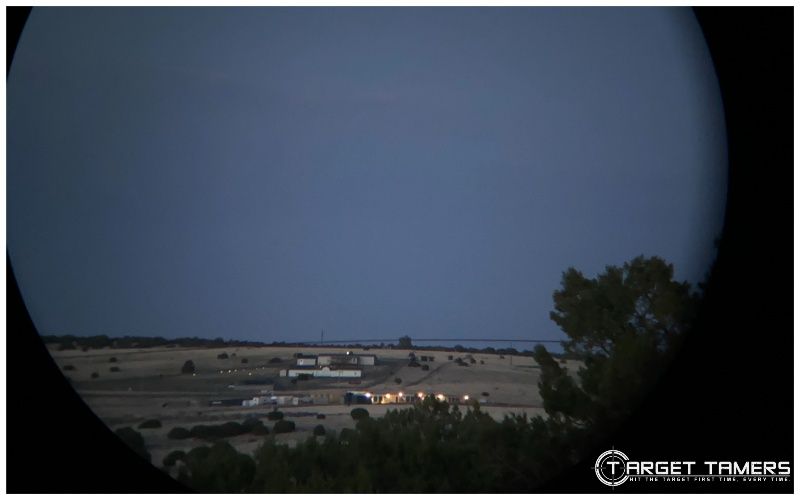
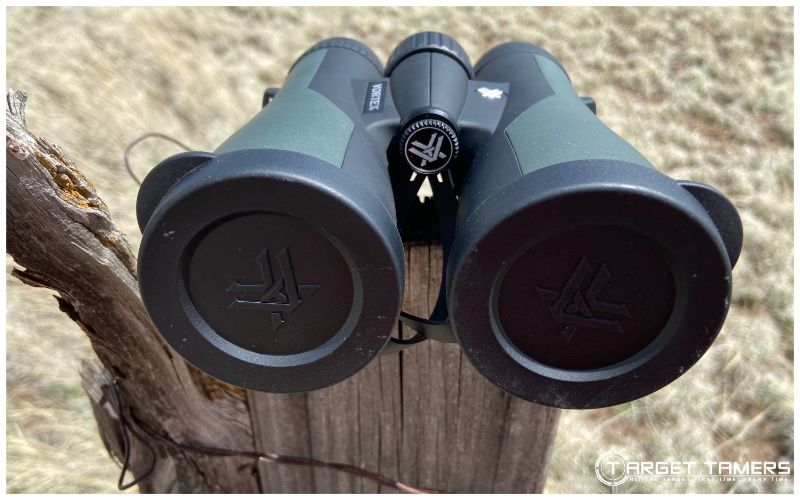
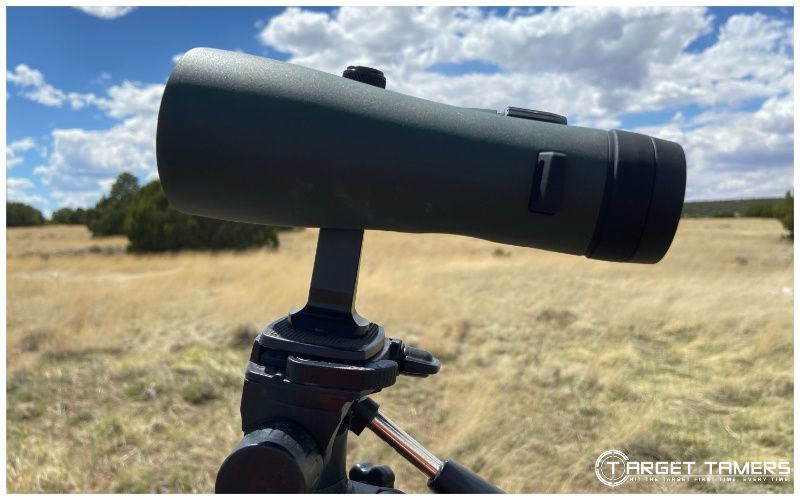
The Crossfire series of optics has always been an affordable and yet high quality line. The old series were incredibly popular, and with the new one at the same old price, it's bound to be just as favored.
This Vortex will be your affordable low-light champ, far-reaching sleuth, and lightweight hunting optical system. Check out the Crossfire HD 10x50 review for the details of our hands-on experience with this binocular series.
2. Primary Arms SLx 10x42 – Best for General Use
For binoculars that don’t have ED glass, the Primary Arms SLx 10x42 throw their weight around with confidence and with good reason. The glass is exceptionally clear. In fact, I strongly recommend them as a budget pair of binoculars based on its optical performance alone.
Pros:
- Price
- Excellent color rendition
- Multiple applications
- Lightweight
- Fog/waterproof
Cons:
- Eye relief
I tested the SLx binoculars at all hours of the day, and in my experience, they over-performed in a great way. The only time I ran into what I can foresee being an issue for glasses-wearers is the 16 mm eye relief.
With the eyecups retracted, my frames are right up against the eyepieces. It’s uncomfortable for long periods of glassing, but doable for quick scans. However, since I can correct for my vision with the diopter, I prefer to use the Primary Arms SLx binoculars without my glasses anyway.
Bird watching at the lake, scanning the timber and open fields, searching the skies, and to spot .22 cal groupings at approx. 50 yards, I was impressed. Even though they’re not ED optics, I am amazed with the color rendition that was almost completely free of chromatic aberration.
These binoculars have excellent on-axis sharpness and contrast. I think the depth of field is a little shallow for a 10x42, but for the money, I really don’t think you can beat the SLx in terms of performance and quality.
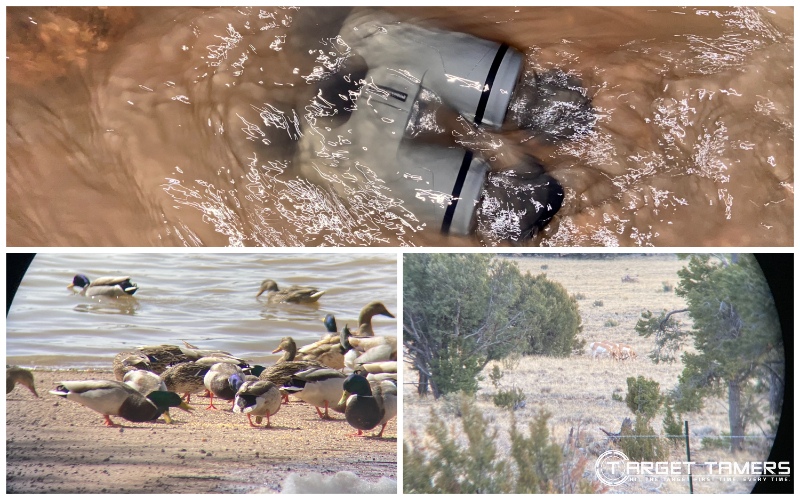
As far as being tough enough for the hunt, I submerged them in freezing temperatures. Not a single problem has arisen. It’s fog and waterproof, rubber armored, has a fiber reinforced polymer chassis, and is ready to hit the outdoors.
It’s a new favorite of mine that I consider the best of the budget-friendly market. I recommend it for bird watching, hunting, sightseeing, and any recreational application where your boots may take you.
2. Celestron Nature DX 8x42 – Best for Wildlife Viewing
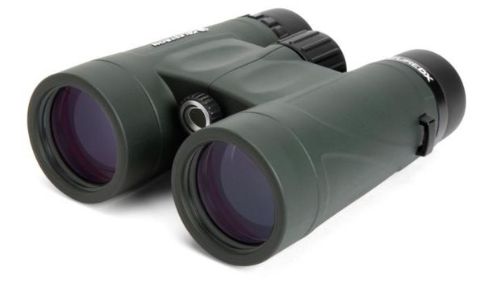
The Nature DX 8x42 is one of the better binoculars for the low-end market. It has good optical and build quality ideal for casual wildlife and birdwatching applications.
Pros:
- All-purpose
- PC prism coatings
- Wide FOV
- Good eye relief
- Fog/waterproof
Cons:
- No ED glass
For wildlife viewing, birdwatching, and other recreational uses, the Nature DX 8x42 is a great pair for casual use while sticking to the budget. With phase-coated (PC) BAK-4 prisms, it offers better-than-average image quality, but there is minor CA and lack of color fidelity in lowlight or very cloudy conditions.
Since it’s the non-ED version, its performance is acceptable for casual use. You can always opt for the Nature DX 8x42 ED model as it also falls under $200 and has a wider FOV but is slightly larger and heavier.
Weighing in at 22.2 oz, it’s still considered lightweight but is what a compact 10x42 would weigh. Some consider it on the heavy side for all-day hiking and extended periods of birdwatching.
It has a polycarbonate chassis, is both fog and waterproof, and is 5.3 x 4.9 x 2” in size. Its specs are very good with its 17.5 mm of eye relief, 6.5 feet close focus distance, and 388 ft/1000 yards FOV. It comes with appropriate caps, neck strap, and a carry case – everything ready to go from the box.
The non-ED Nature DX model offers a price point under $150, is easy to use, and offers good performance and quality for casual use. To stay closer to the $100 end of the budget, this is the model that fits the bill.
3. Maven C.2 7x28 - Best Compact Binoculars
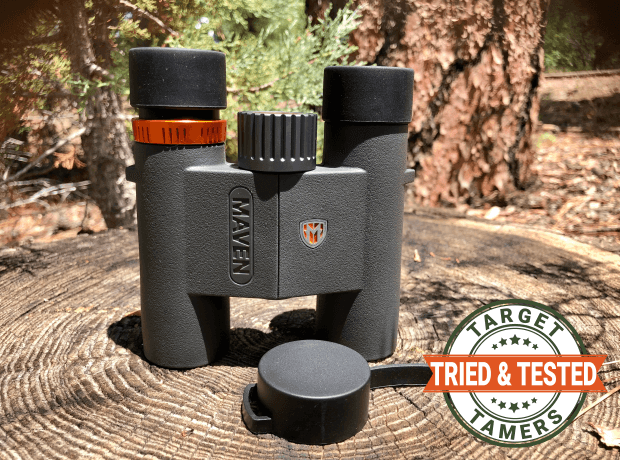
The Maven C.2 7x28 is compact, affordable and low-powered, but is far from comparable to most binoculars in its price range.
Pros:
- Compact
- ED glass
- Dielectric coatings
- Excellent moving parts
- Maven warranty
Cons:
- Close-focus issues
The Maven C.2 binoculars have impressive glass for its price point. Yes, it’s under-powered compared to many alternatives for the cost. But, it sits above all within the compact category and competes against larger ones exceptionally well for its mid-range quality.
It’s not a guessing game as to why it’s a high performer. It has ED glass, dielectric prism coatings, FMC coatings, and an exterior scratch and oil-resistant coating. Glass is definitely one thing that Maven knows how to do and do it well.
Silky smooth moving parts makes the C2 a delight to use for fast operation and easy employment in the field, bird park, and at a sports game.
If you’re observing butterflies a few feet from you, you’ll run into collimation issues like I did. Even if you can get maximum focusing, you may see double when you’re glassing less than 15 yards. So, maybe it’s not for you if proximate viewing is the primary use.
For all other compact binocular uses, the Maven C2s nail it.
4. Nikon Action Extreme ATB - Best 10x50 Porro Prism Binoculars
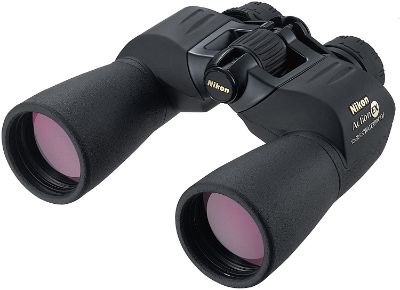
Many binocular collections within the Nikon brand have come and gone, but these binoculars under $200 have withstood the test of time. Still in trend, the Porro design of the Action Extreme proves to be a selling point for the brand.
Pros:
- Price
- Porro prism
- BaK4 glass
- Fog/waterproof
- FOV
Cons:
- Size/weight
Porro prism binoculars have the offset eyepieces and objective lenses with the eyepieces closer together and the objectives set wider apart. It's all due to how the prisms are assembled, and believe it or not, in its assembly alone, it's optically superior to entry-level and basic roof prism binoculars.
All internal prism surfaces are reflective, so light loss is kept to a minimum.
Porro binoculars of ancient days were traditionally made with BK7 glass, but this model sports BaK4 glass. The Porro binocular also allows for greater depth perception, and with the 6.5-degree angular field of view, you'll have plenty of sight image to follow and track birds on land and on shore.
But, Porros have a reputation of being heavy and larger than their roof prism counterparts. It remains true with the Action Extreme weighing in at 36 oz and is 7 x 7.7" in size. In the past, they were difficult to waterproof, and so a roof prism was invented to provide a compact, lightweight, and waterproof binocular.
However, Nikon has been able to fill the binocular with nitrogen and waterproof it to withstand the weather realities of all your outdoor adventures.
After all this, the Action Extreme truly is ready for action. To bird watch, explore the seas, and sightsee, the Porro binocular is ready for adventure.
5. Leupold BX-1 McKenzie HD 10x42 – Best for Hunting
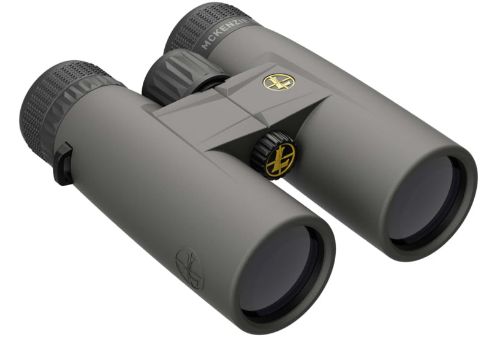
Leupold upgraded the BX-1 McKenzie series to include HD optical quality and a couple, new features. Given its price point, it’s still an affordable way to land a Leupold for serious hunting conditions.
Pros:
- HD Optics
- Replaceable eyecups
- Longer eye relief
- Extreme climate exposure
- Compact/lightweight
Cons:
- Replaceable eyecups
The BX-1 McKenzie has twist-up, field replaceable eyecups which is a very convenient and high-end feature. They twist-up and off to allow for maintenance cleaning and replacement. The only thing about replacement is that it’s not as easy it you may think. Given that there are no replaceable eyecups to be bought separately as a back-up pair, you will still need to contact Leupold for replacements.
Regarding everything else about the binoculars, they are more than reasonably priced for those on a budget. It has HD Optics and Leupold discloses calcium-fluoride which elusively implies ED glass.
The BX-1 has a polycarbonate housing with full rubber armor and longer eye relief with 15mm. They can be mounted to a tripod or kept in the included binocular case with the Go Afield shoulder strap.
The HD model became slightly shorter in length to complement its compact size and easy handling, but it maintained its extremely light weight of 22 oz. This is excellent for today’s standard of full-size binos and is great for day hiking and hunting without the heft.
The BX-1 McKenzie HD is proof that Leupold continues to upgrade their entry-level offerings without compromising on affordability.
6. Vortex Diamondback HD 8X32 Binocular - Best For Birdwatching

What do you need in a lightweight pair of binoculars for bird watching? Excellent glass and image quality, usable magnification, and a wide field of view.
With the HD upgrade in the Diamondback series, the 8x32 model is now better suited for bird watching. The low price under $200 makes the buy even sweeter.
Pros:
- Price
- HD optical system
- Wide FOV
- Lightweight/compact
- Tripod adaptable
Cons:
- No aesthetic changes from old model
There are no flaws on the upgraded and new Diamondback HD binoculars. They are the improved version of the recently discontinued Diamondback series which had image quality issues. But, Vortex listened and equipped the new line with many new features.
But, it's hard to tell the difference between the short-hinge binoculars since the only apparent change is the branding on the barrel from "Diamondback" to "Vortex." The lack of change in its physical and aesthetic appeal is not necessarily a bad thing. Why fix it if there's nothing wrong with it in the first place?
So, what are the upgrades? The new Diamondback HD has an HD optical system to reduce chromatic aberration and enhance resolution and color rendition. This is an excellent feature for birders who want to examine and view a bird's plumage as close to its true form as possible.
It also has dielectric coatings on the prisms and an external ArmorTek coating that protects the objectives with an ultra-hard, scratch-proof surface. For a smaller configuration, it has an excellent field of view of 426 ft/1000 yards.
Following those fast-flying flocks is a non-issue if you can keep up. Mount it to a tripod and you'll have the steadiest image to follow, inspect, and enjoy the fruits of your labor.
Although not expected, if you have any issues with your new pair of binos, rest assured it's covered by the best warranty in the industry, the Vortex VIP Warranty. Heard rumors about how good it is? It's all true.
What to Look for in Binoculars Under $200
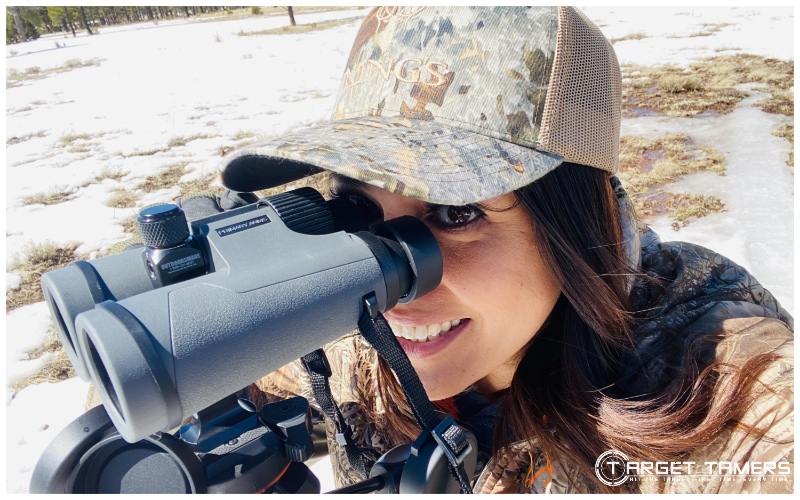
It's almost not fair, but in this price range, you can see a huge quality jump from $100 to $200. You're getting a lot more bang for your buck with that extra hundo.
However, it's too bad that a lot of the time, you might think you're getting a quality binocular just because of the brand name. When it face-slams the dirt, you're out of luck.
Don't be ignorant and settle for the first brand that you think has their stuff together. Do a little digging and you might be surprised. But, what are you digging for?
Let's help you shovel out the crud from the gold by sifting through the features you want to see on the best binoculars under 200 dollars.
Glass
Glass sources will vary between manufacturers, and this may be the entry-level market for many big-name brands. By being brand specific, you'll be able to depend on quality glass for clear, sharp, and bright images.
However, to reduce aberrations such as fish-eye lens, blurriness at the edges, dark edges in the field of view, and color fringing, additional glass elements may be needed.
You may start seeing technologies in this price range that market ED (Extra-low Dispersion) glass, HD (High Definition) optical systems, and wide broadband and field-flattener lenses to improve image quality.
But, these technologies do not have industry standard specs, so one brand may produce better results than another with the same glass elements or marketed terms of glass products.
| Binocular | Prism Type | Glass Type |
|---|---|---|
| Vortex Crossfire HD | Roof Prism | Undisclosed |
| Primary Arms SLx | Roof Prism | Undisclosed |
| Celestron Nature DX | Roof Prism | BAK-4 |
| Nikon Action Extreme ATB | Porro Prism | BAK-4 |
| Leupold BX-1 McKenzie HD | Roof Prism | BAK-4 |
| Vortex Diamondback HD | Roof Prism | BAK-4 |
Coatings
It wasn't long ago that coatings in this price range were only multi-coated. Now, as the market gets even more competitive, you should be seeing FMC (Fully Multi-coated) optics. Since this quality of coating is now being layered on binoculars for less than 200 bucks, don't consider anything less than FMC.
If binoculars have a roof prism design, look for additional prism coatings such as phase correction coatings and dielectric coatings. This helps to make up for the internal glass surfaces in the roof prism where the most light loss occurs.
Fortunately, as glass elements are being introduced with binos in this budget, we're also seeing these specialized coatings enter this price range too. With the availability of binos with this tech, demand the best coatings.
| Binocular | Coatings |
|---|---|
| Vortex Crossfire HD | Fully Multi-Coated HD |
| Primary Arms SLx | Fully Multi-Coated |
| Celestron Nature DX | Fully Multi-Coated & Phase Correction |
| Nikon Action Extreme ATB | Multi-Coated |
| Leupold BX-1 McKenzie HD | Fully Multi-Coated HD |
| Vortex Diamondback HD | Fully Multi-Coated HD & Phase Correction |
Magnification
Generally, the higher in power you go, the higher the price tag jumps. Fortunately, there are many available magnification ranges in this price range.
If you're being brand specific, authoritative brands may offer a higher-powered binocular for under $200 in their price-attractive collections, usually considered entry-level.
Some generic brands will top out their "high-end" binoculars in this price range, but you must consider glass and coating quality. If the optics can't keep up with the demands of high power, magnification benefits will be made invalid.
Very high-powered binoculars must be tripod compatible since it can be difficult to steady your hands and the optic at 10x and above - be on the lookout for its ability to be mounted.
On the other end, low powered binoculars often have small apertures. The upside is it's lightweight and compact package. The downside is it doesn't allow enough light in to provide clear, bright sight picture quality.
The same is true for high powered binos with small apertures such as a 10x25. 8-10x magnification is considered the most versatile, short to long-ranging power range for most applications.
| Binocular | Magnification | Objective Lens |
|---|---|---|
| Vortex Crossfire HD | 12x | 50 mm |
| Primary Arms SLx | 10x | 42 mm |
| Celestron Nature DX | 8x | 42 mm |
| Nikon Action Extreme ATB | 10x | 50 mm |
| Leupold BX-1 McKenzie HD | 10x | 42 mm |
| Vortex Diamondback HD | 8x | 32 mm |
Eye Relief
The short of it is, most binoculars will work for users that don't have vision problems and don't wear glasses. But, if it has less than 13 mm of eye relief, it's going to get uncomfortable to glass with as you may have to press the cups to your brows.
Eye glass wearers mustn't compromise on binoculars with less than 15 mm at the very least. Longer is better in this case, and 20 is excellent and provides a lot of room. Of course, this rule can be applied to those who wear sunglasses.
| Binocular | Eye Relief | Exit Pupil |
|---|---|---|
| Vortex Crossfire HD | 15 mm | 4.2 mm |
| Primary Arms SLx | 16 mm | 4.2 mm |
| Celestron Nature DX | 17.5 mm | 5.25 mm |
| Nikon Action Extreme ATB | 17.2 mm | 5.0 mm |
| Leupold BX-1 McKenzie HD | 15 mm | 4.2 mm |
| Vortex Diamondback HD | 16 mm | 4 mm |
Durability
As the quality in the optics are getting better, expect the same in build construction. There are still binoculars out there that are not fog or waterproof, and this is unacceptable for hunters whose seasons are usually in the cold months.
To prevent moisture from seeping into the optics and introducing bacteria and condensation problems, you must demand fog and waterproof durability.
Not all binoculars will be built strong enough to withstand the rigors of a hunt. Take a recreational daytime binocular - it's good enough to handle some light sprinkling, but a drop from a tree stand? No way.
Shockproof builds are vital to provide a long-lasting binocular where you can trust that optic assemblies and parts stay in place as they're supposed to.
| Binocular | Dimensions | Weight | Fog/Waterproof |
|---|---|---|---|
| Vortex Crossfire HD | 6.6 x 5.3" | 29.5 oz | Yes |
| Primary Arms SLx | 5.6 x 5 x 2" | 20.7 oz | Yes |
| Celestron Nature DX | 5.3 x 4.9 x 2" | 22.2 oz | Yes |
| Nikon Action Extreme ATB | 7 x 7.7" | 36 oz | Yes |
| Leupold BX-1 McKenzie HD | 5.8" (L) | 22 oz | Yes |
| Vortex Diamondback HD | 4.4 x 4.6" | 15.9 oz | Yes |
Warranties
The best warranties are going to be from the big-name brands like Leupold and Vortex. Binoculars can fail, and when they do, you want it to be backed by a quality warranty so you can keep on glassing without out of pocket expenses.
Unlimited, transferable, and no receipt required are the hallmarks of the best warranties.
Unfortunately, in this price range, most warranties will be limited lifetime, non-transferable, and will require that you keep your original proof of purchase. Don't forget, you may need to register your binocular within a certain window of time.
| Binocular | Warranty |
|---|---|
| Vortex Crossfire HD | VIP Warranty |
| Primary Arms SLx | Limited Lifetime Warranty |
| Celestron Nature DX | Limited Lifetime Warranty |
| Nikon Action Extreme ATB | Limited Lifetime Warranty |
| Leupold BX-1 McKenzie HD | Lifetime Guarantee |
| Vortex Diamondback HD | VIP Warranty |
Quality Binoculars at an Affordable Price
Just upping the game with an extra $100 more can buy you a ton of extra quality. Keep your eyes peeled for luxury perks that may present themselves in the durability of the binocular, the quality of the glass, or the optical features for an optimal buy.
Going for that extra mile will cost you, but a pair of $200 binoculars can be a lifetime buy with the right brand and the right know-how. Get up to date on our full reviews and guide if you plan on making the most of your dollar!
Further Reading
- 10x42 vs 8x42 Binoculars for Hunting, Birding, Safari & Event Observation
- 4 Features to Consider & Look for When Buying Binoculars
- Best Binocular Magnification For Hunting, Birding, Wildlife Observation & More
- Binocular Glass 101: BK7 vs BAK4 and Porro Prism vs Roof Prism
- Binocular Terminology: Glossary Of Features & Parts Of Binoculars

